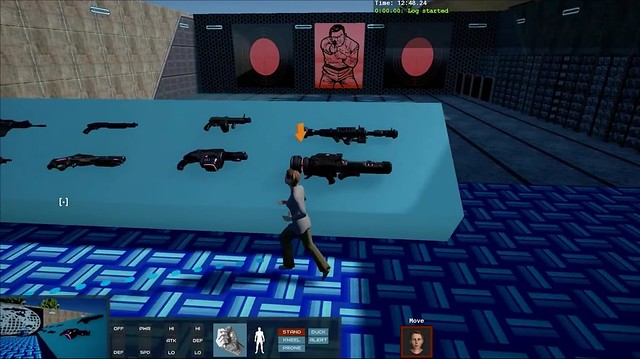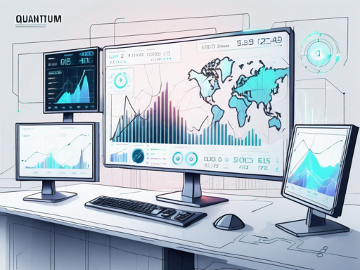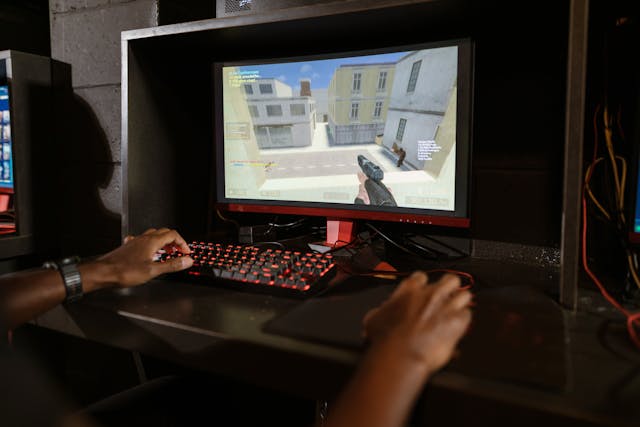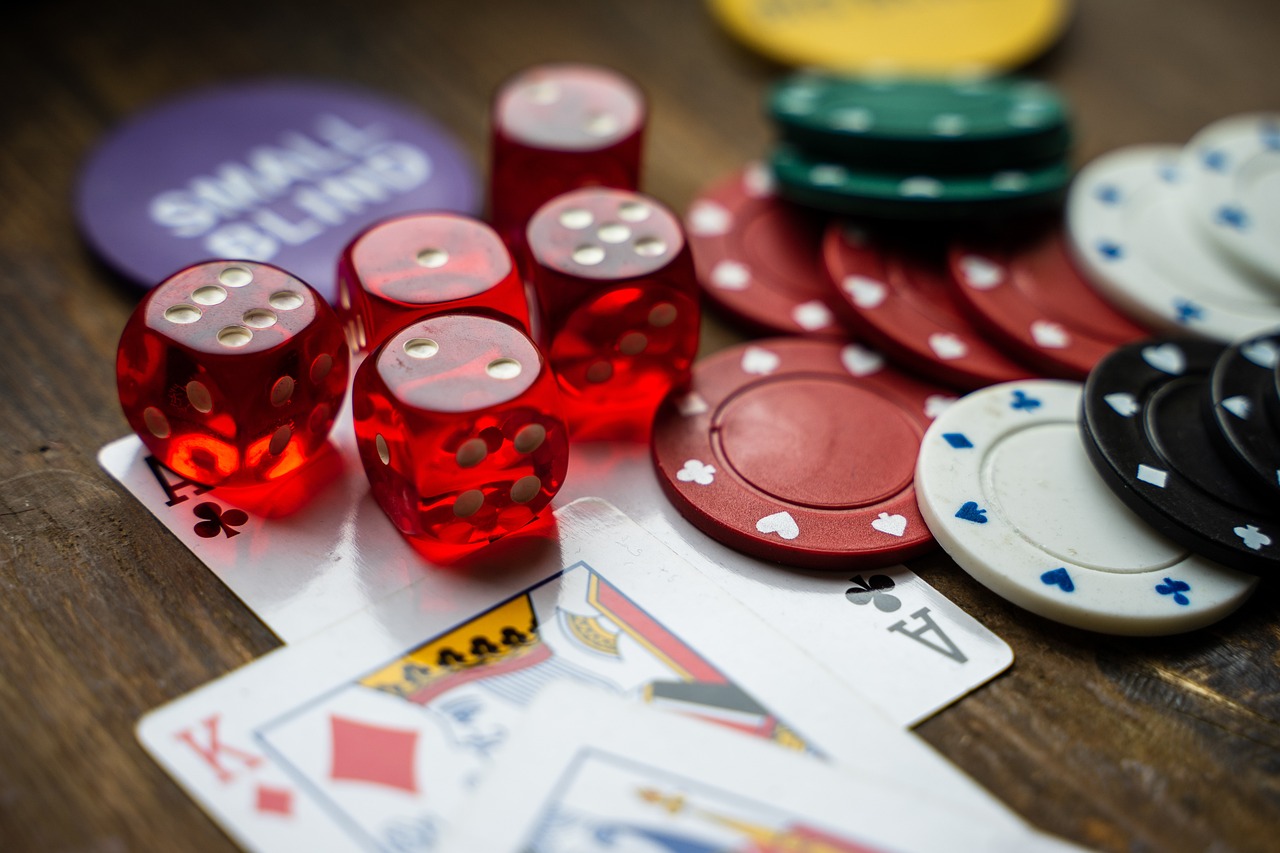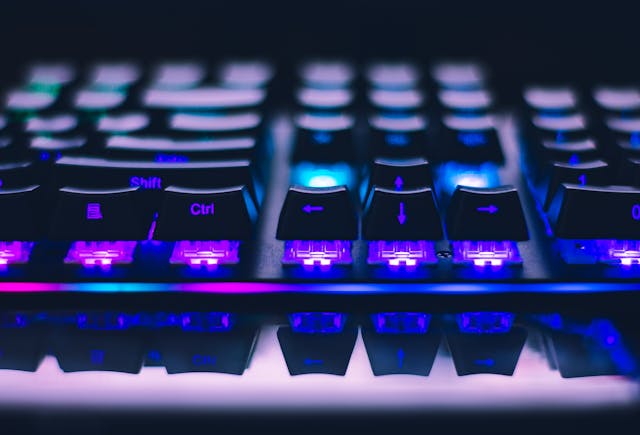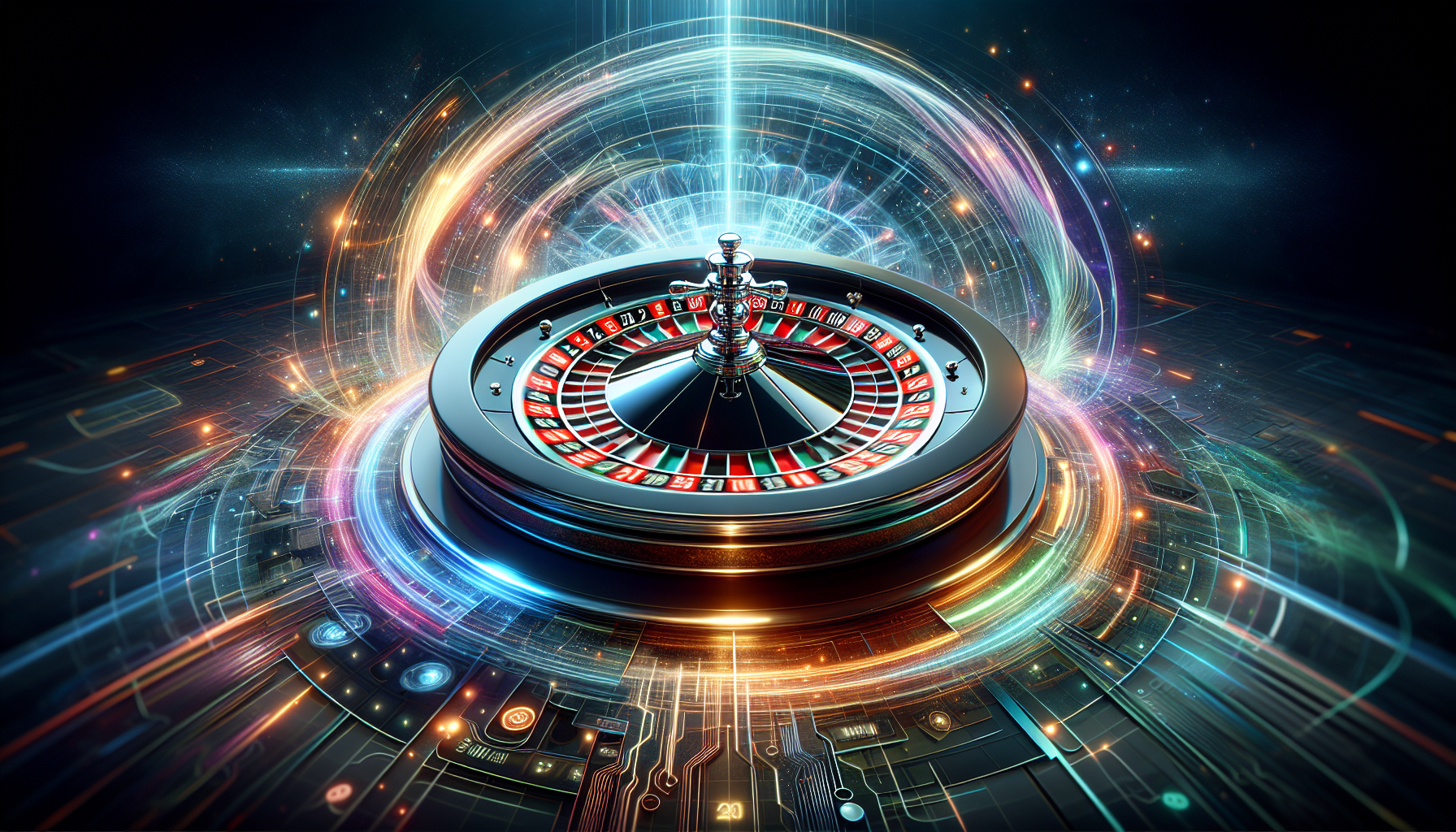It’s not often in games that we get to play as bona fide spies. It’s even rarer that we get sandbox games that rely on stealth mechanics and espionage. In fact, the sub-genre is defined mostly by two series, Splinter Cell and Metal Gear Solid. Well, if things go well for the Kickstarter from Alex Maier and Jason Sams from Shy Snake Games, we could be adding another game to the list of turn-based, stealth-oriented espionage titles.
The name of the game is Spy DNA and it’s currently seeking funds on Kickstarter. The game sees players being put in charge of a squad of super spies, with the leader of the squad being the player’s own created character.
Spy DNA takes place in the not too distant future, and the game will feature more than 20 hours of gameplay with a variety of missions and locations to visit. I had an opportunity to pick the brains of Alex and Jason about their upcoming project, asking about the what makes this turn-based, sandbox, RPG different from other games out there as well as what you can expect from the actual gameplay. You can check out the Q&A below or learn more by checking out the game’s Kickstarter page.
One Angry Gamer: First up, I think the one thing that stands out the most about the Spy DNA project is the fact that you are a husband and wife team working on the game. Is this your first project together or have you been working on games together previous to Spy DNA?
Alex: This is our first game project together, but not the first time we’ve built something as a team. We work very well together. After seeing the film “Oblivion” our inside joke is that we’re an effective team.
https://www.youtube.com/watch?v=6faOf2Unmu0
OAG: What exactly drew you to the spy genre with turn-based combat as the centerpiece of the gameplay?
Jason: This is actually a long story. I have been running pen and paper (PnP) RPGs off and on for over 20 years. A long time ago we were playing a hyper-realistic pen-and-paper game which was fun, but the players couldn’t understand it, and it was difficult to run. At some point I wrote a computer program to replace the book rules and be my GMs tool. It evolved over the years to the point that it now serves character sheets as HTML, and the players can use their phone or tablet to see their character status in real time.
One of the players asked if it could be turned into a computer game. That got us thinking, and Alex started to run with some story ideas and Spy DNA was born.
I built a computer simulation engine for the combat based on that past experience. You can do a much better simulation when it can be physics-based and not limited by the tables and dice rolls of PnP.
We describe Spy DNA as being turn based because of the pacing of gameplay. We felt the most important thing about the gameplay was keeping that feeling of control and awareness that comes from turn based games. We both enjoy games of thought and wanted to build one.
So It feels like a turn based game to the player. However, the underlying simulation engine operates in real time. It slices the time up and presents it to the player in turns of varying length. This gives the player time to think and strategize. We did this to get around the normal realism limits of turn based games.

We were attracted to the spy genre for a couple reasons. It allows for a much deeper stealth and dialog system and is a much better fit for a story line than a straight combat oriented game.
OAG: During one of the blog updates for Spy DNA, some of the different stealth elements are detailed. It’s mentioned that the AI will look for certain things on a player if they’re carrying conspicuous items or weapons. While it’s been made clear that Spy DNA is definitely about stealth… is it also possible to take a guns-a-blazin’ approach to recon or low-intensity stages? And following up on that, is it also possible to hide larger weapons in the stage and use them later, similar to how in Hitman games you can bring a sniper rifle to a location and then retrieve it later in the stage for a specific purpose?
Jason: Taking a “guns-a-blazing” approach is certainly possible. There is however a cost. If you start blasting away with heavy weapons in a civilian area don’t be surprised if SWAT shows up or if future interactions with the police or other residents become less friendly.
As to hiding equipment, it will be possible for you to stash some equipment, do your sneaky recon and make a plan. Then come back, load up, and execute.
Alex: We try to design levels so that they have more than one solution. Having a physics-based system underlying the game actually makes it easier on me as the level designer to offer the player multiple solution alternatives. Instead of making a level artificially difficult through puzzles that one has to figure out by repeated trial and error, I design a location that would make logical sense in the real world, and the player will be able to apply their own knowledge of the world and some common sense to approach the level. Basically, we let the level itself be the primary challenge, instead of resorting to puzzles and mini-games.
Also, the player gets the role of the squad commander, and can bring different members of the team along on missions. Depending on how the main character was created, and how well their skillset matches the task at hand, the player will be able to take the squad members whose talents are the most complementary to their own.
OAG: Also on the subject of combat… I love the concept that you’re going for more realistic combat mechanics. One thing I’m curious about is whether or not an enemy can be incapacitated by targeting non-vital areas? In games like Perfect Dark or GTA IV it was possible to disable some enemies with leg shots, hand shots or gut shots… without killing them. Is that possible in Spy DNA for non-lethal takedowns or is it more about the kill shots?
Jason: Yes! Leg injuries are already working in game. Hand, arm, and weapon disables will be implemented before we ship. We also have other less common effects. For example lung injuries will reduce a character’s stamina over time and an off arm injury would impact two handed weapons but not single handed weapons.
Alex: And if we get the funding we need, we even will be able to show the effect the injury is having on the character by the way they move, when they limp, or clutch their injury, things like that. Animations for this sort of movement aren’t readily available in online libraries, so we’ll have to work with motion capture artists in a studio to record them. Hopefully, in both male and female version.
https://www.youtube.com/watch?v=ZoUqgpgzo8M
OAG: Given that the game will rely on an attentive enemy AI, will players be able to hide bodies to avoid raising the suspicions of the enemy?
Jason: Yes, though the exact form is TBD. If the motion capture budget allows, I’d like to have characters pick up and move the bodies. That feels the most realistic. If the budget doesn’t allow that we will go the No-One Lives Forever route of body dissolver or stashing them in your inventory to move them. Either way, the mechanism will be there. How it’s shown to the player is still in development.
OAG: One of the things mentioned in the blog is that environmental objects play a big part in the combat – cover fire and hiding behind objects is the difference between living and dying in a battle. Is it also possible to use the environment as a weapon, such as falling objects, physics-based properties or explosive barrels?
Jason: Environmental explosions will be part of the gameplay. This will be very map dependent. In industrial settings you will want to be careful with missed shots or possibly use the hazards to your advantage.
We also have a model for over-penetration. I.e. some high penetration, low damage, weapons have a tendency to shoot through things. This means some cover will be more or less valuable depending on the weapons in play.
Falling objects are not currently planned just due to limitations of the animation budget.
https://www.youtube.com/watch?v=KVWce5PX08Y
OAG: Given that players can create their own character and change their appearance, how will the story involve the player-character? I know a lot of developers face challenges in telling a gripping or compelling story centered around a player-made character, so I’m curious if the player-character will be an entity that moves through a story being told around them, or will the player-character be the centerpiece of the story?
Alex: Good point. We’re trying to make the story engaging for the player, so that each level is not just seen as a problem to solve, but also an opportunity to discover more of the Spy DNA world, and the people who live in it. Many of your actions and decisions will have an effect on how things will go for you in the future.
The AI will maintain a counter for each character’s disposition, and change their behavior accordingly. If you keep pissing somebody off, they may become uncooperative, not share the information they have, or they may lie outright, because they don’t like you anymore.
Also, when you create your character, the game will make a psychological profile for you in the background (hats off to JA2), and whenever you pick the course of action more in line with that profile, things will go smoother. Just like in real life going with your nature makes it easier to acquire skills you have a predisposition for, or succeeding with tasks you have a knack for. If the player chooses to go against their character’s “nature” they may find that they fail at the checks more often, and even when they do succeed, it’s barely spectacular.
To give you an example, imagine you’re playing a character like you described earlier, who prefers to shoot first and ask questions second. They’re good at combat, but their interpersonal skills may be… well, let’s just say they’re lacking. Now if you take that character and try to have them negotiate or be diplomatic, you can imagine that it may go about as well as in “The fifth element.”

OAG: In some of the screenshots and video footage we see that the player-character has a sizable inventory space. Will there be weight limits on how much each member in the squad can carry, or will certain items slow down or encumber the playable characters?
Jason: Encumbrance isn Spy DNA is weight-based. It’s slightly different than most games in that it’s a continuous scale. Every pound you carry slows you down a little bit. The amount a character can carry is dependent on their attributes and will vary from one character to the next.
We wrote a much more in-depth description of how the system works here, complete with a humorous video link.
http://www.shysnake.com/blog/2015/11/9/movement-and-encumbrance
OAG: How many weapons and gadgets in total are being planned for inclusion in the game?
Jason: We are still building out the gadget and armor list but I can give you descriptions of the weapons currently in Spy DNA. They break down into three groups.
The Kalachov line of conventional weapons, which are the most common.
There are rifles, pistols, and sub-machine guns that fire 4.5mm to 10mm caseless ammo. They look and behave very much like you would expect from today’s equipment. Currently there are four pistols, three rifles, three sub machine guns, and two sniper rifles in this group.
The Dark Dart line of flechette weapons. These are smooth bore, high velocity, low damage weapons. In terms of gameplay they differ in that they are specialized for burst fire and anti-armor use. They are also shorter ranged and somewhat less accurate than the conventional weapons. Currently there are six pistols and two rifles in this group.
The Magnetar International line of EM weapons.
These are effectively light rail guns. They fire armor piercing flechettes similar to the Dark Dart line but do so electronically. This avoids the accuracy problems and velocity limit of the more conventional Dark Dart. The downside is cost and weight. There is one heavy rifle and two sniper rifles in this group.
OAG: In the videos we see some standard civilian NPCs… will it be possible to take hostages or threaten them to perform certain actions like in Reservoir Dogs or The Godfather? Or will the interactions with non-combative NPCs center around specific mission objectives?
Alex: You can certainly threaten enemy NPCs, and take them prisoner, as well as interrogate them. I wouldn’t recommend doing this to civilian bystanders though. For one, the bad guys may not care if you shoot a civilian, and also, that would seriously undermine your reputation as playing on the “good guys” side. My guess is you won’t want to see civilians flee before you in terror when you enter the scene. Some non-combatant NPCs will have more to say than others, and have more of a role in the game, so you will do well not scaring them off. But when it comes to baddies, have at it, be as intimidating as you please.
Not to reveal too much, but there will be some non-combatant NPCs who will hold mission-critical information and the ability to help you complete the mission with maximum stealth. Again, being part of a secret project, you don’t want civilians calling the cops on you, because “government denies knowledge” of the Crolimax project, and you’d be pretty much on your own if you get arrested. Your mission support would also end at that point, effectively ending the game.
OAG: It’s mentioned in the Kickstarter video that there’s plans to make the game around 20 hours long. How many different stages and environments are being planned for inclusion in Spy DNA?
Alex: We’ve got four chapters in the game. The first chapter is character creation and tutorial, where you get to learn game controls, game background, and meet all the key NPCs. The second chapter is where you get to go on your first actual mission. The chapter starts with your character waking up in their cryogenic suspension pod to find that the lab has been attacked and the research stolen. Now it’s your task to track down the stolen research and recapture it.
As you move through the story, it takes you from the city where the Crolimax Lab is based to countries halfway across the world, discovering new clues, recapturing the stolen technology little by little, learning new skills, and receiving more genetic upgrades.
You’ll have some missions set in urban environment, indoors and out, with civilian bystanders and high danger of detection. Other missions will be in areas farther away from the cities, think local airports, storage facilities, and other locations where you can make quite a bit of noise before getting in trouble. We’ll also have some missions in remote locations, with maps spanning a few kilometers in size, where you’ll be executing your plan of attack based on local topography and the weapons you brought. Those would be the kinds of missions where a sniper rifle may come in quite handy.
Huge thanks to both Alex ad Jason for answering the questions about Spy DNA. If you like what you’ve read and you think that the game deserves your patronage, you can learn more about the project or contribute to the crowd-funding cause by visiting the Kickstarter page.
